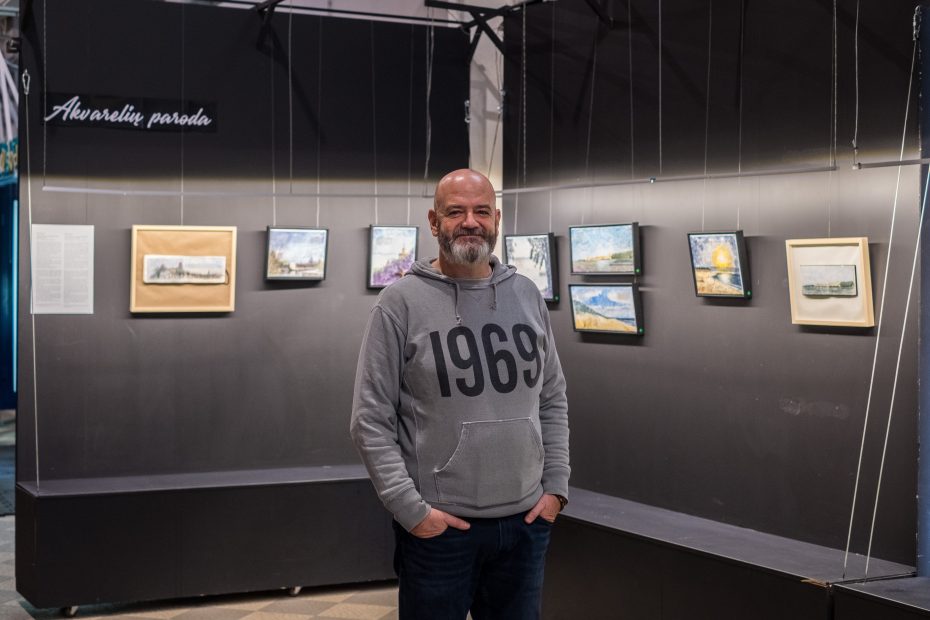On December 13th, the opening of the watercolour exhibition by the French artist Jérôme Cigara “Travel Diaries of Lithuania Through the Eyes of a Western Traveller” will take place at the Energy and Technology Museum. In the latest exhibition, Cigara presents works created in Lithuania from 2019 to the end of 2022.
“From Nida to Palūšė, from Palanga to Vilnius, from Klaipėda to Druskininkai, via Kaunas and the magnificent Niemen delta (with some beautiful escapades among the Baltic and Ukrainian neighbours) everywhere I filled pages and pages of notebooks of my trips. What am I looking for? Giving meaning to an image, a lived, localized and dated moment. What do I seek? To touch more or less your Baltic sensitivity with the vision of a Western traveller,” said the author of the exhibition.
Before the opening of the exhibition, we invite you to meet the artist.


– After travelling throughout France, Canada, moving to Africa… how come did you find yourself in Lithuania?
– After spending seven years in Africa, my eldest son left for Brussels to study, where he lives to this day, so we decided to return to Europe. We have always travelled by geographical and cultural choice, never by choice of professional or financial career.
Several reasons for choosing Lithuania: the Baltic has always attracted me like other names around the world: Valparaiso, Anchorage, Cape of Good Hope. During an exhibition on the Gorée island in Senegal, I found a book on amber because in Africa, it was and still is a precious adornment.
In 2018, an exhibition on symbolism in the Baltic countries took place at the Musée d‘Orsay in Paris, finally persuading us to move here.
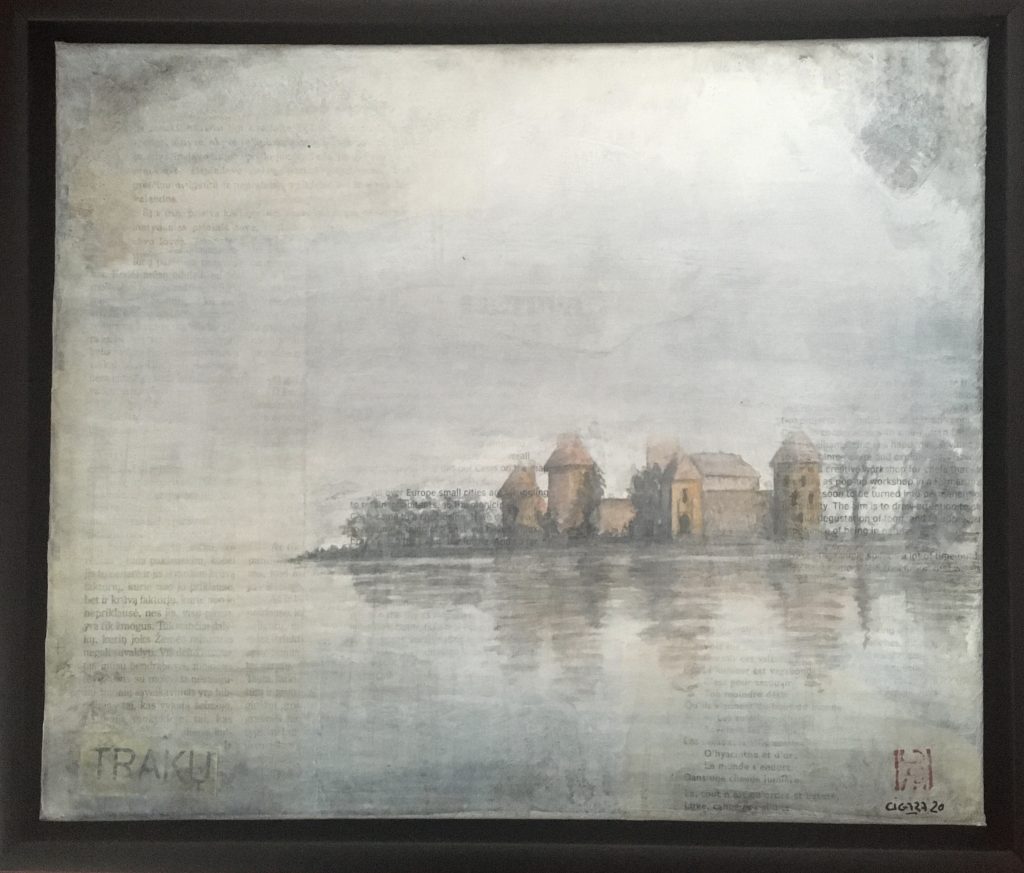

– It’s interesting that you studied aeronautical technology, and you’re now preparing an exhibition at the Energy and Technology Museum. This must not be a coincidence?
– I don’t believe in chances very much. I grew up in an old industrial city, and I am still very sensitive to the more or less dilapidated charm of its architecture. After my technical studies and even when I changed my path a little, I am still fascinated by human genius in technical creation.
Watercolour is a good technic to have a realistic or hyperrealistic picture. After I more or less dirty the image with stains, drips, it comes closer to what I want to express, what seems more real for me, as the world is not like a picture in a postcard.
There must be a link.


– What drawn your attention in arts, watercolour?
– Like all children, I have always drawn. But most stop at around the age of 10, when important changes in their life take place: a search for identity, questions about morality. Drawing can become a refuge. I was lucky to have parents who maintained a taste for art, they made us, children, visit museums, art galleries, and I’ve never stopped.
Watercolour came later. First while travelling, for practical reasons of space, and later for technical reasons and creative possibilities.
– A lot of your work is from Vilnius. The city is planning its 700th birthday next January. What streets do you like to wander? What buildings or objects attract your attention?
– Vilnius is a very beautiful city, as the baroque or soviet style city centre is very exotic for me. I prefer parks like Kalnų parkas, Vingis or Sapiegų parkas with its old twisted trees and its slightly controlled wild side, which shows a certain relationship with nature. We also find it in the great national parks of Lithuania like Aukštaitija National Park, Labanoras or Neris Regional Parks.
The interior of bars and cafés, their atmosphere is filled with the sound of people – young, old, families, just like in bars and cafés in Ireland or Newfoundland.
And, of course, the capital’s places of worship, such as Church of St. Anne, are fascinating.


– In the exhibition, you exhibit your sketchbooks, diaries as you call it. These sketchbooks are as an exhibit, an art form itself. Where do you keep them all? Why is it important for you to sketch on site?
– Indeed, my notebooks, which reflect a great deal of my (and my family’s) life, could be considered a work of art. Although it is difficult to display and use, I think it is a future treasure for my children. When they were younger, they preferred to look at these notebooks rather than photo albums because each drawing for them associated with a personal memory and therefore had more meaning. Drawing on the spot gives meaning and value to my work. It would be easy for me to draw Japan with pictures from the internet, but what would be the point of that apart from decorative or aesthetic?
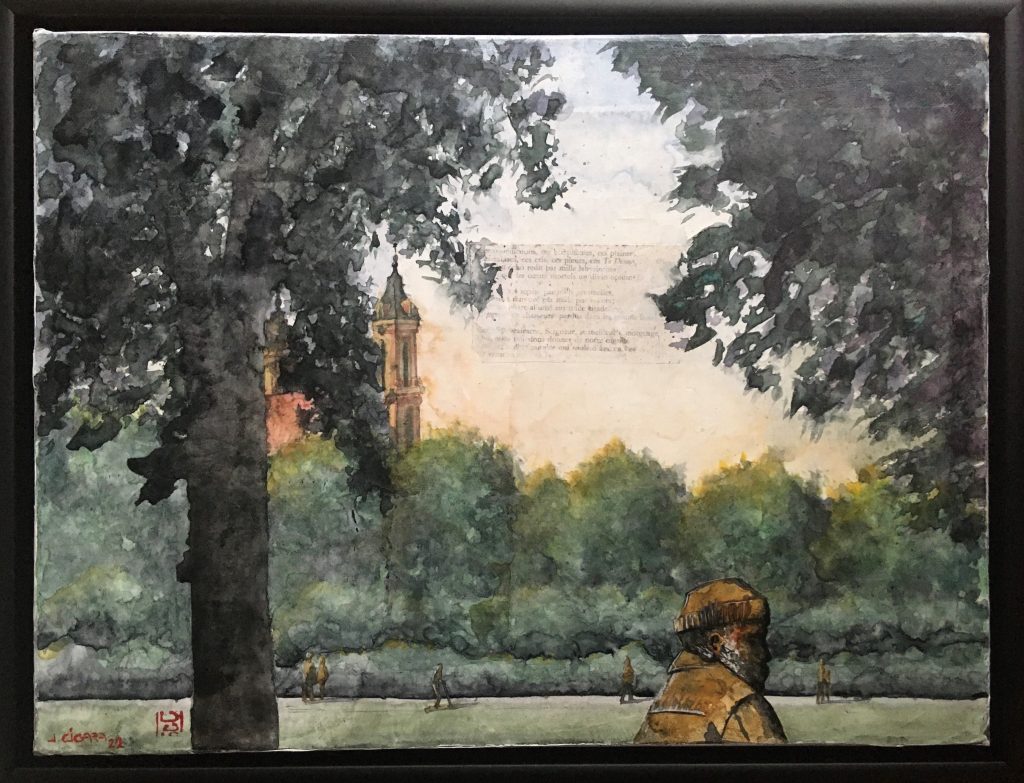

– In watercolour, you often use the collage technique, the texts of “Les Fleurs du mal” by Charles Baudelaire. What inspires you most with it? Is there a Lithuanian text or poet you would consider to use?
– I am not a specialist in literature nor poetry. Of course, I also read books of foreign literature, but in a novel translation one does not lose the meaning of the text. Poetry, however, loses a lot of its charm and its strength in translation. For me, Baudelaire and more specifically “Les Fleurs du mal” covers almost all subjects with the same finesse and strength, therefore, quite is easy to use with my watercolours.
I regularly use texts from local literature (Lithuanian, as well as English, Wolof or Zulu languages), but when I don’t master the subtleties of the language, I look for politically and emotionally neutral texts (cultural journals, scientific texts, articles). French language also allows me to express what I wish and be more sincere.
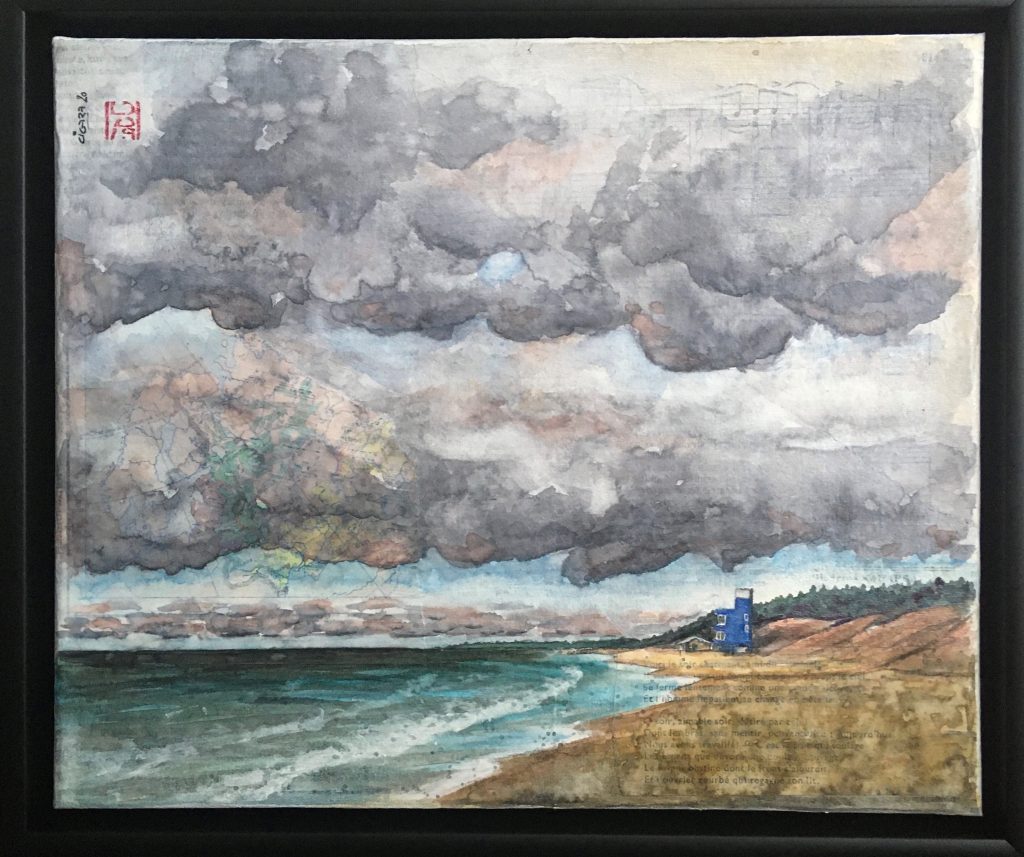

– How do you see Vilnius as a Western traveller? Have you ever thought of where life would bring you next?
– The Baltic countries, for me, are shrouded in mystery with its unknown history in France, marked by the Soviet period, these expanses of forests and lakes, very charming, very romantic, the end of Europe, almost a country of the North and a really different culture.
For the moment we are here, we are good, not too far from France, at least until our sons finish their studies. The countries of Northern Europe attract me. I was selected last summer for an artist residency on Korppoo island in Finland, but personal and geopolitical reasons forced me to decline it. I still keep it in the back of my mind, soon…
The exhibition at the Energy and Technology Museum opens on December 13th at 5 PM. Visiting the exhibition during the opening is free of admission charge. The exhibition will be open until January 22nd, 2023.
Interviewed by Gintarė Urniežė.
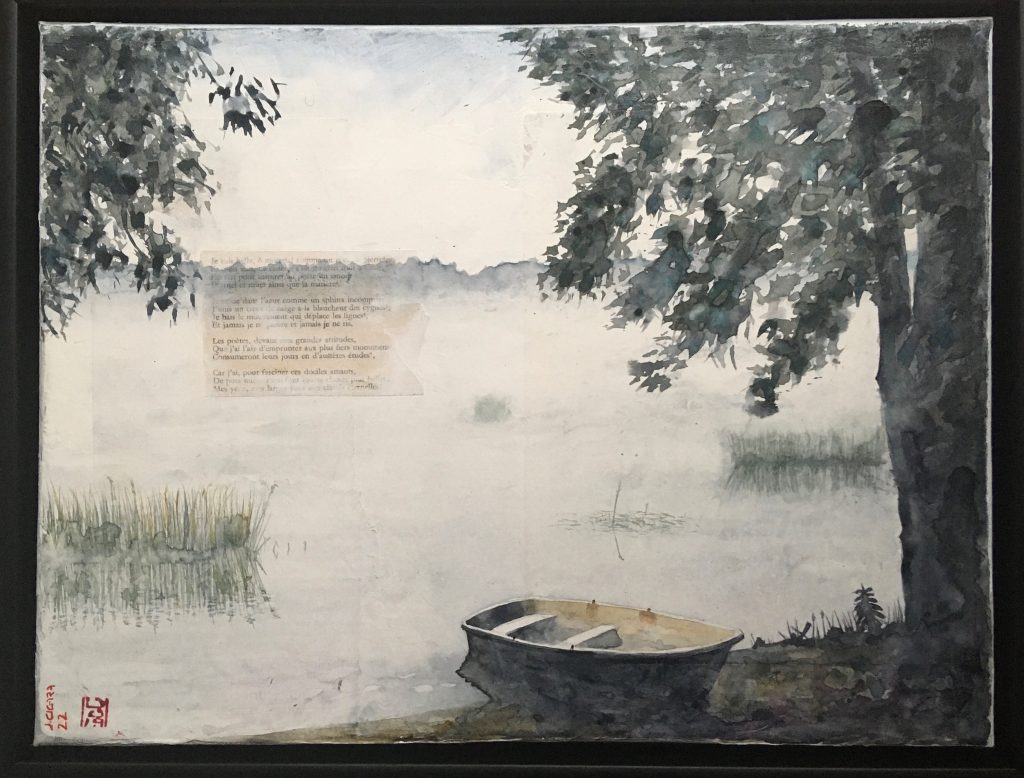

Jérôme Cigara (born in 1968, in Decazeville, France) studied aeronautical technology in Toulouse, after which became a teacher in mechanical engineering. He then relocated numerous times throughout France, attending plastic arts courses at the Paris Sorbonne University, as well as at the André Malraux Art School in Villeneuve-sur-Lot.
The artist exhibited his work in Sainte-Colombe-en-Bruilhois, later, in 2007, in Saint Pierre and Miquelon, a French archipelago near Newfoundland. Cigara opened an exhibition at the Leyton Gallery of Fine Art in St John’s, Canada, travelled numerous times around the American continent, and filled numerous notebooks.
In 2012, Cigara headed to Africa, Libreville in Gabon, exhibited at the Joyce African Dreams Gallery, as well as travelled the Central and Southern African continent once again filling his notebooks with sketches. In 2016, after travelling to Dakar in Senegal, the artist participated in various exhibitions and the Dakar Biennale Dak’Art in 2018. In the meantime, he illustrated books.
In 2019, Cigara moved to Lithuania, where he now lives and works.

